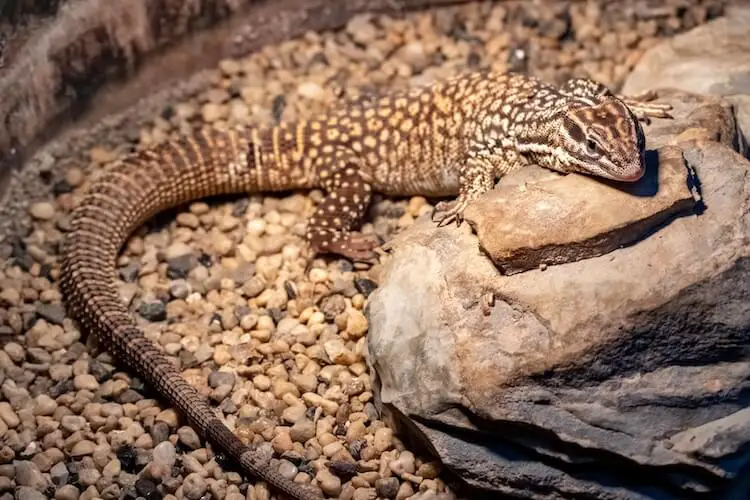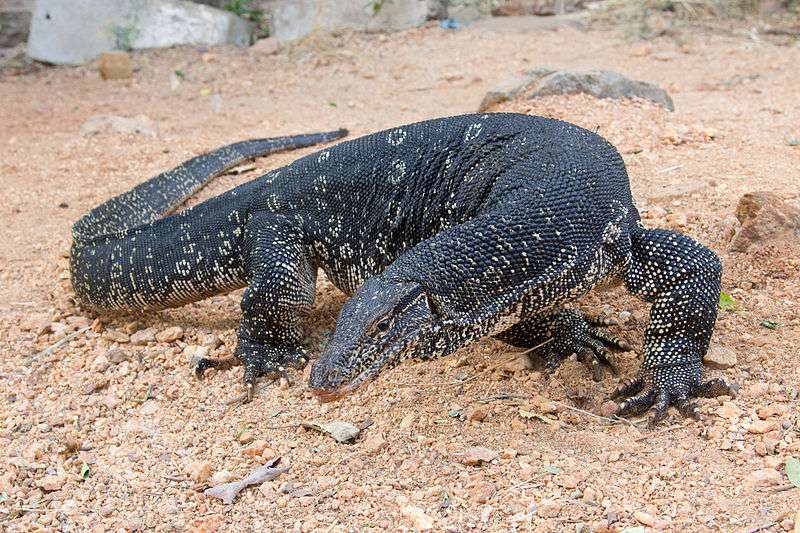
Description:
Scientific name: Varanus giganteus
Life span: 20-30 years
The perentie is Australia’s biggest monitor lizard or goanna. The lizard may reach a maximum length of 2.5 m and a weight of up to 15 kg while its normal length is between 1.7 and 2.0 meters. Compared to the Komodo dragon or the Asian water monitor, perenties are more slender lizards. It has robust legs with five clawed toes and a tail that is quite strong. It has several sharp, gently curved teeth and a forked tongue. Their primary color is brown with a large yellow or cream rosette pattern.
Native Region/Habitat
Perenties may be found in Queensland, the Northern Territory, South Australia, and the dry desert regions of Western Australia and South Australia. Their natural environments are made up of rocky outcroppings and gorges with compacted soil and loose stones.

Behavior:
In general, perenties hate interacting with people and frequently hide to avoid being spotted. They can quickly dig a shelter burrow since they are skilled diggers. They can readily climb trees because of their strong claws. To have a better perspective of the environment around them, they frequently stand on their hind legs and tails. Monitor species frequently engage in this “tripoding” behavior. Perenties are adept sprinters who can use all four legs or only their rear legs to go quickly.
The perenties are apex predators with no natural predators in the environment. They are extremely active predators that mostly eat small animals, reptiles, and occasionally birds like diamond doves. They scavenge carrion in addition to hunting live prey.
Care As a pet/In captivity:
They can be quite expensive to keep and manage in captivity, take a lot of ability in handling large Monitors, and may be very hazardous to handle, especially around meal time. Both indoor and outdoor enclosures are feasible. Outdoor enclosures for animals from climatic zones close to the display location are recommended, offering a natural control of climatic and seasonal circumstances. To keep reptiles from climbing out of outdoor cages or digging under them, the walls must be made of smooth, unclimbable barriers and extend at least 50 cm into the ground. The enclosure’s walls need to be tall enough to prevent escape. A sizable amount of water should be part of the enclosure’s interior design so that the monitor may submerge completely without spilling. It is important to offer a basking area under the heat source.
Table





